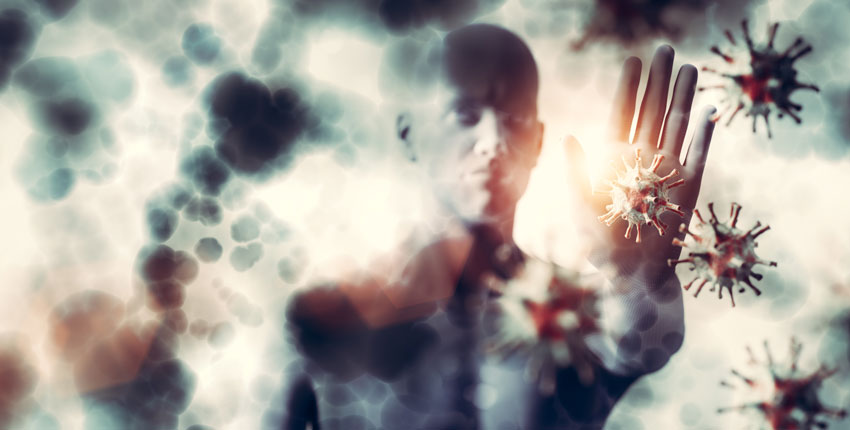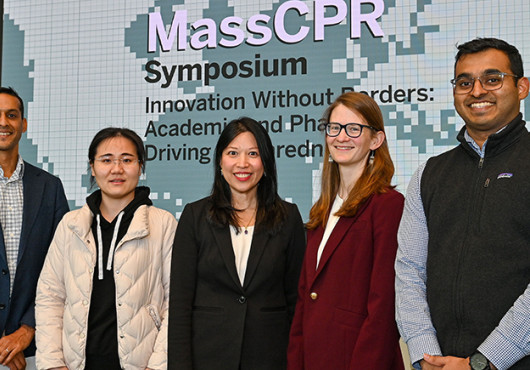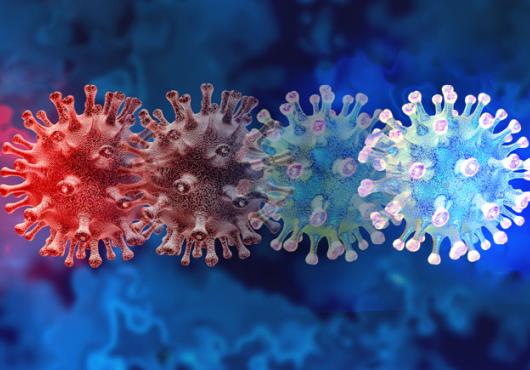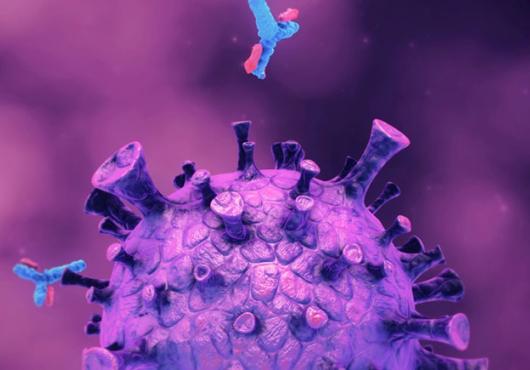
This article is part of Harvard Medical School’s continuing coverage of medicine, biomedical research, medical education, and policy related to the SARS-CoV-2 pandemic and the disease COVID-19.
Does an infection with SARS-CoV-2 render people protected from subsequent infections with the virus? And if so, how do we know which individuals have built up their immune defenses?
These have been two of the most important, and confounding, questions about COVID-19, and the answers hold valuable clues about the interplay between the human immune system and the virus responsible for the ongoing global pandemic.
Antibody-based tests, used to detect recent or past infections with SARS-CoV-2, have been one way to track both viral spread and immune system response.
Now, a report from a new study led by Harvard Medical School investigators at the Ragon Institute, Massachusetts General Hospital, and Brigham and Women’s Hospital suggests that the mere presence of antibodies may not be sufficient to determine whether a person has built long-lasting protection following infection.
Instead, the research indicates, what matters most may be whether an individual has developed robust levels of antibodies against specific parts of the virus.
The findings, published Feb. 15 in Nature Communications, are based on analysis of data from 120 individuals who had mild or asymptomatic COVID-19. The work was done in collaboration with SpaceX.
Though more research is needed, the new findings represent an important first step in understanding natural immunity to SARS-CoV-2, the research team said. Understanding asymptomatic infection, natural immunity, and who is at risk for reinfection is vital to elucidating the host-pathogen interplay and to reining in the pandemic, while also offering valuable insights about the design of new vaccines and antibody-based treatments.
“This study indicates that it’s not simply the presence or absence of antibodies that matter; rather, the amount and type of antibodies that may play a defining role in the development of a protective immune response,” said study senior investigator Galit Alter, professor of medicine at HMS and core member of the Ragon Institute of MGH, MIT and Harvard.
Notably, the study found, individuals who had built antibodies targeting the receptor-binding domain (RBD) of the virus above a certain threshold had the hallmarks of protective immunity.
“Once you hit a certain threshold of these antibodies, it’s like a switch turns on and we can observe antibody effector functions,” said study first author Yannic Bartsch, a Ragon postdoctoral fellow. “These functions were not observed in individuals with lower antibody binding titers, and the level of protection from reinfections is uncertain in these individuals.”
Though the original goal of the study was to measure antibody levels over time, when reports of reinfection began surfacing, Alter’s team realized their samples may hold much more valuable information than they originally thought.
“In early spring, we weren’t sure if asymptomatic infection could drive long-lived antibodies,” said Alter, “nor whether they possessed the capability to neutralize or kill the virus.”
The team did know, however, that 120 of the study participants had experienced mild or asymptomatic infections with SARS-CoV-2 that resulted in the development of antibodies. Using sophisticated techniques to analyze these antibody responses, the team discovered that individuals who had developed a greater number of RBD-specific antibodies had also developed immune functions associated with natural immune protection.
The work was funded by donations from Nancy Zimmerman, Mark and Lisa Schwartz, an anonymous donor (financial support), Terry and Susan Ragon, the Samana Cay MGH Research Scholar award, funding from the Ragon Institute of MGH, MIT and Harvard, the Massachusetts Consortium on Pathogen Readiness (MassCPR), the NIH (3R37AI080289-11S1, R01AI146785, U19AI42790-01, U19AI135995-02, U19AI42790-01, 1U01CA260476-01, CIVIC75N93019C00052), the Gates Foundation Global Health Vaccine Accelerator Platform funding (OPP1146996 and INV-001650), the Musk Foundation, and the Translational Research Institute for Space Health through NASA Cooperative Agreement NNX16AO69A.
Disclosures:
Alter is a founder of SeromYx Systems Inc. Co-author Pardis Sabeti is a co-founder of, shareholder in, and advisor to Sherlock Biosciences, Inc., as well as a board member of and shareholder in Danaher Corporation. Study co-authors Matthew Gluck, Samuel Beger, Yiyuan Hu, Justin Rhee, Eric Petersen, Benjamin Mormann, Anil Menon, and Elon Musk are employees of Space Exploration Technologies Corp.
Adapted from a Mass General news release





